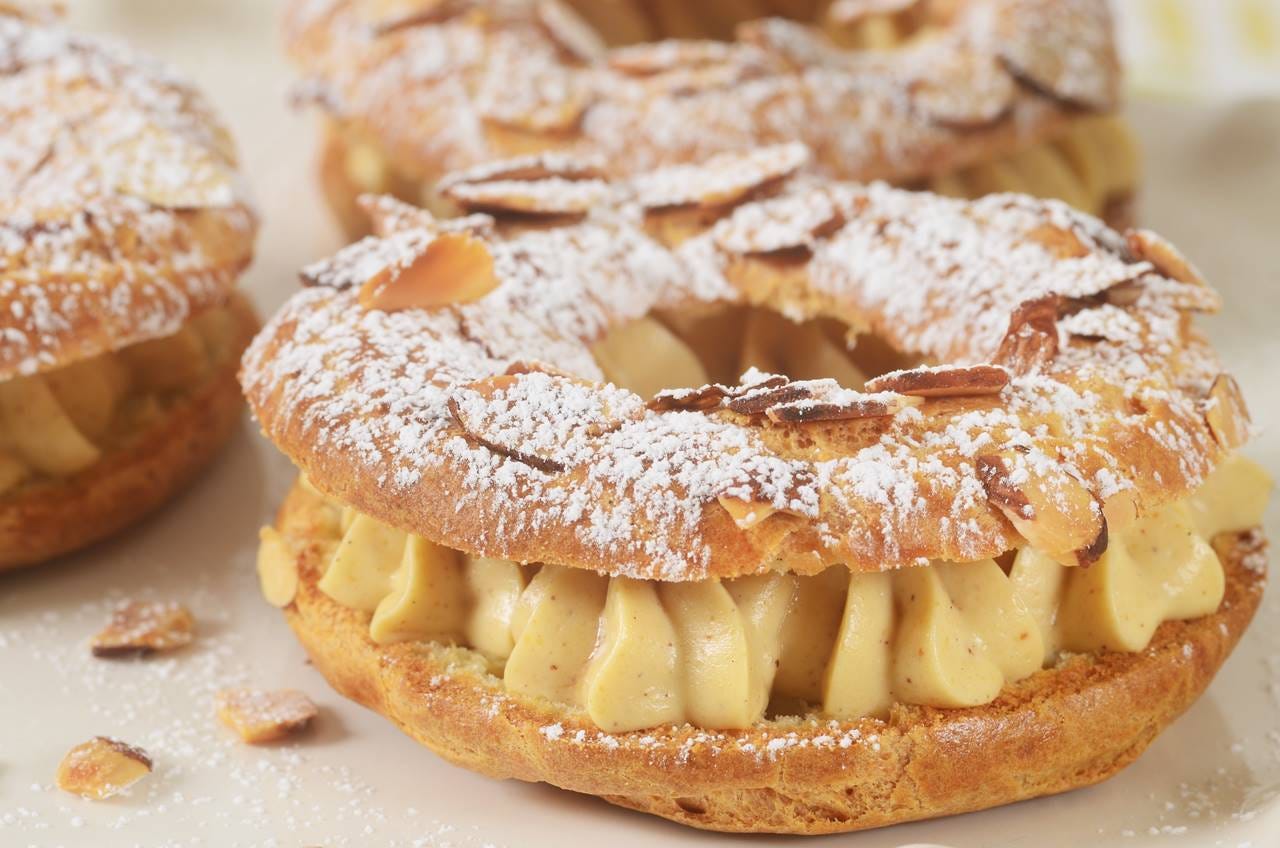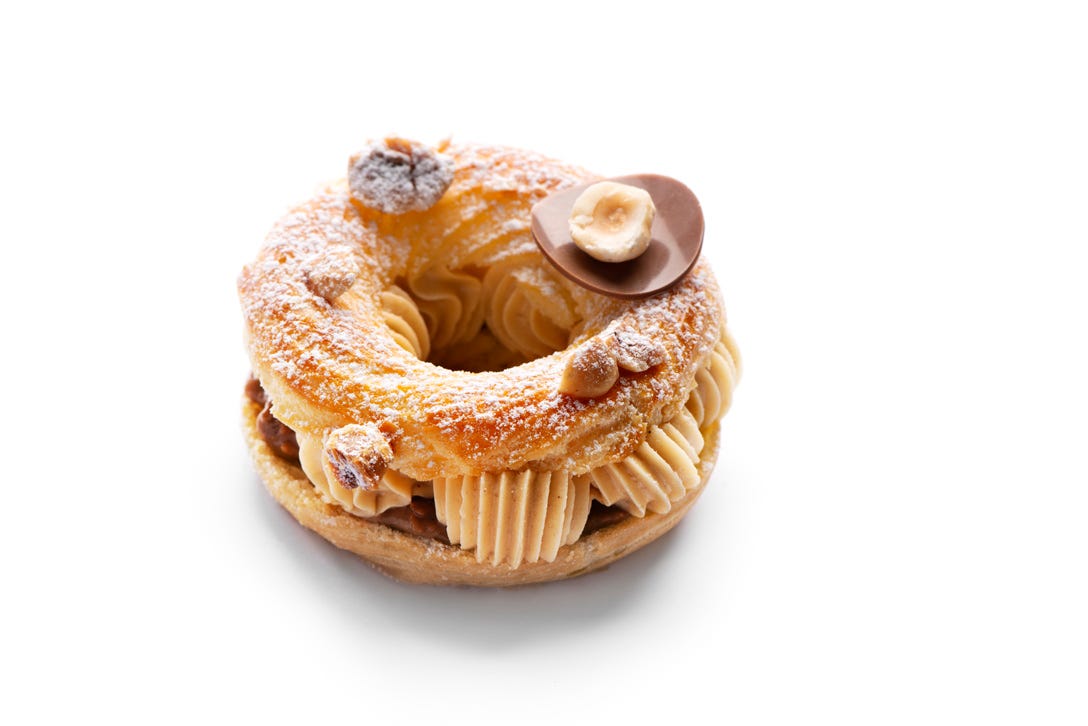The Paris-Brest Pastry
Last week, I was in France and ate a lot of pastries. Here’s the story of one of them.
Upon first glance, the Paris-Brest isn’t that special of a pastry. It’s a circle of choux pastry dough filled with a hazelnut custard and topped with almonds and sugar. But it’s the unassuming circular shape that holds the Paris-Brest’s secrets.
In the 1890s, the bicycle was gaining popularity. However, people only used it to traverse short distances; the public was skeptical of the bike’s ability to hold up over long rides.
So, to demonstrate the bike’s dependability, journalist Pierre Giffard organized the Paris-Brest cycle race. The 1891 event was a 750-mile bike ride through France from Paris to Brest back to Paris. Giffard called the event an “épreuve” (test in French) –– a test of both the bicycle’s reliability and the rider’s endurance.
207 riders participated in the race, and 99 finished. This might seem like a poor showing, but the event successfully demonstrated the bike’s usefulness in traversing long distances. Giffard decided to remount the Paris-Brest race every ten years.
So, in 1910, to commemorate the event’s history and promote the 1911 race, Giffard commissioned chef Louis Durand to create a special pastry.
The Paris-Brest pastry was born. An edible advertisement for a bike race.
Perhaps the pastry’s circular design mimics a bicycle wheel. Perhaps the cream filling mimics the newly-invented air-filled tires of the late 19th century. (The two winners of the 1891 race used air tires on their bikes. Even though both had flats that took an hour to repair, they still saved considerable time compared to their solid tire peers.) And perhaps the dusting of sugar on the pastry mimics the dust splattering onto a bicycle tire as it races down the road.
Perhaps. It’s hard to ascertain definitive meanings from hundred year old pastry designs. Personally, I’m not good at dessert divination, and some disagree with my interpretation: For instance, Jacquy Pfeiffer, dean of Chicago’s French Pastry School, says the pastry’s shape may “represent the head wreath that Greek athletes wore after a victory.” Who knows who’s right…
Design significance aside, following its creation, the Paris-Brest pastry supposedly became a popular snack for riders completing the Paris-Brest race. Because of its high calorie value, it was seen as an efficient source of energy for cyclists. It was the energy bar of its day.
Today, outside of France, the Paris-Brest has taken on a new life as a fancy dessert at high-end American restaurants. Thomas Keller added a Paris-Brest to his menu at Bouchon Bakery in the early 2000s. And, in 2018, the pastry could be found on dessert menus at award-winning restaurants such as Jungsik (a two Michelin star Korean restaurant in NYC) and Canard (a James Beard winning restaurant in Portland, OR).
But, one problem persists with the pastry in America: Its name.
According to pastry chef Daniel Skurnick, diners often mispronounce the dish as pair-iss-breast, enunciating every consonant. Skurnick says: “Then [American diners] have this image of it: They’re thinking it might look like, you know, like a dome-shaped dessert or something.”
But it’s not. It’s a bike tire made out of pastry and cream.
Notes.
The history of the Paris-Brest pastry is pulled largely from this article.
Eater’s 2018 article on the pastry is here.
More on the bike race here.
Thanks to Michael for the inspiration to write this.
Full disclosure: I don’t like hazelnut, so I’m not a fan of the Paris-Brest pastry. I prefer a pain aux raisins. 🤷





